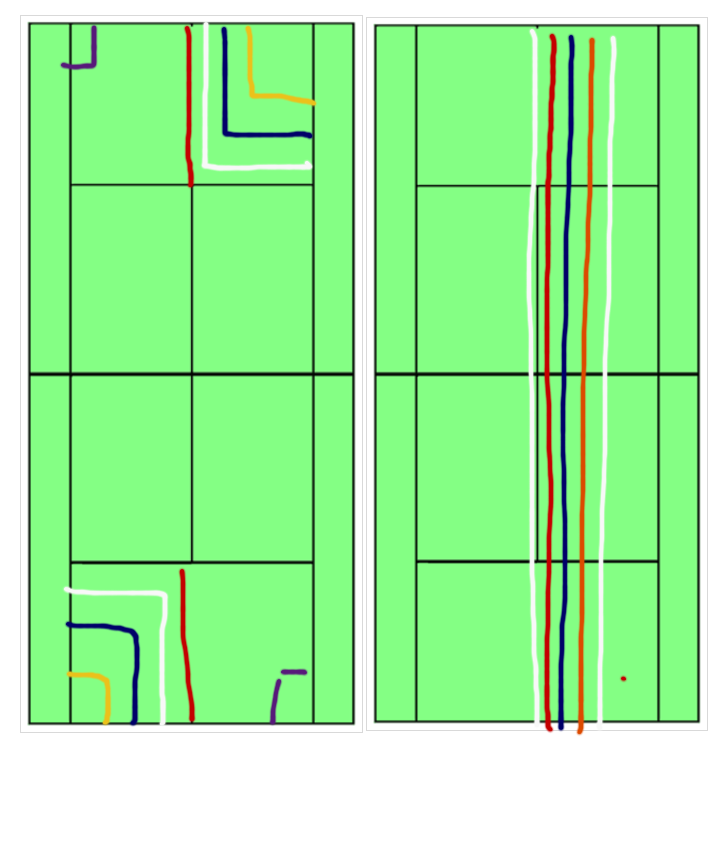Steal This Drill: The Federer Dump
 Sunday, November 27, 2011 at 09:58AM
Sunday, November 27, 2011 at 09:58AM  CAtennis
CAtennis As you're watching the Barclays ATP World Tour Finals, see if you can spot this play (or variation) by Roger Federer: (1) deep inside-out forehand (pushing their opponent deep behind the line - red circle); (2) deep cross-court forehand (blue circle indicates positioning of the opponent); and (3) a soft and short down the line or sharp-angle cross-court.
According to John Yandell, who uses high-speed footage to capture the top players' strokes, Federer has around 27 different forehands. If you ask us, he has 26 variations of the same forehand stroke which depend on (a) the opponent's shot and (b) his respective target. Nevertheless, the basic concept stands: neither Roger nor the other top pros hit the same shot over-and-over again. They vary their shots so as to get the opponent's off-balance and expose as much of their opponent's side of the court as possible.
Too many juniors (and lesser-skilled players) fail to see the court in a three-dimensional format. Since they, presumably, have a hammer on their forehand side, every ball looks like a nail. By crushing every forehand you're only managing to make your opponent move side-to-side (i.e. parallel to the baseline). And what's the basic practice-pattern? You guessed it: side-to-side; so this is something that's not likely to faze them. Sometimes, it helps to push the opponent diagonally as well and use the momentum of her movement (off the court) to create an opening.
 To practice this "dump" forehand, it helps to have touch. This, however, is not a shot that requires a change of grips - as in a slice or drop shot. It is simply a topspin forehand that is "massaged" rather than thumped. For all practical purposes, the shot looks - from your opponent's point of view - like any regular forehand: from grip, to preparation and path of the racket. If you manage to deceive her with your looks, she will dig in her weight in the midfoot (for lateral movement) rather than forefoot (for forward movement). This will make her reaction to the ball a lot more labored and a split-second slower (may be sufficient for you to create a slight opening).
To practice this "dump" forehand, it helps to have touch. This, however, is not a shot that requires a change of grips - as in a slice or drop shot. It is simply a topspin forehand that is "massaged" rather than thumped. For all practical purposes, the shot looks - from your opponent's point of view - like any regular forehand: from grip, to preparation and path of the racket. If you manage to deceive her with your looks, she will dig in her weight in the midfoot (for lateral movement) rather than forefoot (for forward movement). This will make her reaction to the ball a lot more labored and a split-second slower (may be sufficient for you to create a slight opening).
Creating this touch takes practice, but this practice can be integrated into your basic cross-court rally drill. Try drilling 4-5 shots cross-court (or inside-out) followed by a "touch" topspin shot to the opposite side of the court or to the same side as your practice partner. In both situations, the ball should land around the service line. If executed correctly, the ball should bounce again one more time before reaching the baseline [KEY!!!]. Practice partners can alternate this play until they feel comfortable executing the play from any situation and irrespective of the pace/spin/placement of practice partner's shot.





